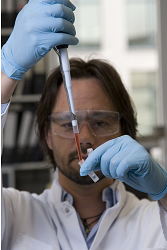
Outcomes
A student:
› develops and evaluates questions and hypotheses for scientific investigation CH11/12-1
› designs and evaluates investigations in order to obtain primary and secondary data and information CH11/12-2
› conducts investigations to collect valid and reliable primary and secondary data and information CH11/12-3
› selects and processes appropriate qualitative and quantitative data and information using a range of appropriate media CH11/12-4
› communicates scientific understanding using suitable language and terminology for a specific audience or purpose CH11/12-7
› describes and evaluates chemical systems used to design and analyse chemical processes CH12-15
Content Focus
The identification and analysis of chemicals is of immense importance in scientific research, medicine, environmental management, quality control, mining and many other fields.
Students investigate a range of methods used to identify and measure quantities of chemicals. They investigate and process data involving the identification and quantification of ions present in aqueous solutions. This is particularly important because of the impact of adverse water quality on the environment. Students deduce or confirm the structure and identity of organic compounds by interpreting data from qualitative tests of chemical reactivity and determining structural information using proton and carbon-13 nuclear magnetic resonance (NMR) spectroscopy.
Working Scientifically
In this module, students focus on developing and evaluating questions and hypotheses when: designing, evaluating and conducting investigations; analysing trends, patterns and relationships in data; and communicating scientific understanding about applying chemical ideas. Students should be provided with opportunities to engage with all the Working Scientifically skills throughout the course.
Extract from Chemistry Stage 6 Syllabus © 2017 NSW Education Standards Authority (NESA)
